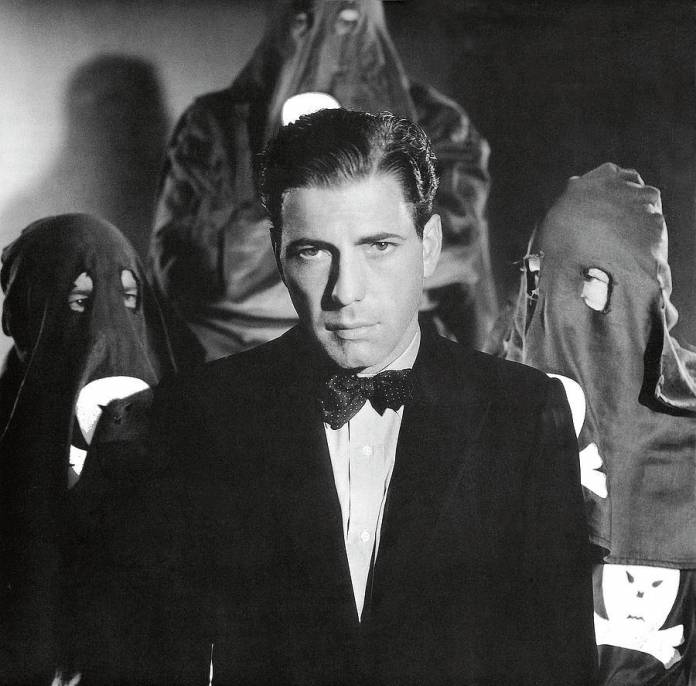It’s always good news when there’s a revival series at the Roxie, and this week’s four-day “Dark Side of the Dream” is all gold: A mix of classics and rarities that expands outward from the noir and pre-Code showcases that co-producers Elliot Lavine and Don Malcolm have previously brought to the venue. The theme this time is vintage films that offer some critique of the “American Dream”—one myth that just about everybody seems to believe in, yet which has always been out of reach for many. The films range from 1930s Warner Brothers crime dramas to high noir and ’60s exploitation.
The resonance of these films in our own very peculiar political era is particularly clear in Elia Kazan’s 1957 A Face in the Crowd, a movie that has really regained some traction of late. And no wonder, since TV’s lovable bumpkin Andy Griffith plays a sociopathic slimebag who purveys a pandering populist image into a dangerous sort of quasi-political celebrity. How audiences were able to accept eight innocuous seasons of The Andy Griffith Show after his skin-crawling performance here is something of a mystery.
Such trenchant social observation was fairly rare onscreen in the 1950s. But a couple decades earlier, Warner Brothers routinely cranked out socially conscious dramas—three of the best (if not best-known) included here. The revelation among them may be William Wellman’s 1933 Heroes for Sale, which is in the running as the most ambitious 71-minute narrative ever. It sprawls 15 years from WW1 foxholes to flophouses to prison to Depression shanty towns, following the hard knocks given a WW1 veteran (Richard Barthemless) whose heroic battlefield deeds get mistakenly attributed to a cowardly comrade. Almost a compendium of the era’s pressing social issues, it’s a compact wonder.
Hardly lacking ambition either is Archie Mayo’s 1937 Black Legion, in which Humphrey Bogart plays a not-particularly-bright factory worker whose jealousy of a more industrious colleague’s promotion makes him easy prey for a racist vigilante organization. (Trivia note: The KKK actually sued WB for patent infringement in use of one of their symbols. They lost.) It’s a strong portrait of how disgruntled “nice guys” can become little fascists. The same year the studio also featured Bogart in a rare female-driven “gangster film,” Lloyd Bacon’s very tough Marked Woman—one of Bette Davis’ first great roles, as a “nightclub hostess” who turns state’s witness against her mob boss. It’s among the most brutal and shocking movies Hollywood managed to get made shortly after the introduction of the censorious Production Code.
Probably the rarest film in the series is M, a 1951 American remake of Fritz Lang’s famous 1930 German film, which introduced the world to Peter Lorre. This time it’s David Wayne playing the pathetic child murderer—though as with the original, the focus is more on the city population itself, as fear and anger turn even the criminal underworld into police allies as the manhunt goes on. Though not as innovative as Lang’s original, this version is striking on its own terms nonetheless, particularly for the vivid use of downtown Los Angeles locations—this is not at all a studio-soundstage enterprise. The director Joseph Losey is also represented here by The Lawless from the prior year, a prescient movie about a newspaper editor’s exposing miserable conditions thrust upon Mexican immigrant agricultural workers in a central California town.
Losey was just at the start of a promising directorial career, one shortly derailed by Senator Joe McCarthy’s witch hunt for supposed Communist sympathizers in the film industry. (He ultimately re-settled in England, thoroughly re-inventing himself as the maker of elegant, arty films like The Servant and The Go-Between—to the point where eventually few realized that he was from Wisconsin, not Hyde Park.) Several other films in the series feature blacklisted talents, including the poetical boxing melodrama Body and Soul (1947), whose star John Garfield, director Robert Rossen and writer Abraham Polonsky were all seriously impacted by the “Red Scare.” Ditto Cy Endfield, who had to work under pseudonyms for a while after 1950’s Try and Get Me! aka The Sound of Fury. It’s a modest but harrowing variation on Strangers on a Train terrain, as a chance meeting between a hapless good guy (Frank Lovejoy) and a swaggering very bad guy (Lloyd Bridges) solders their fates together.
Able to escape the blacklist was John Huston—though he fought vigorously on behalf of its victims—who between famous screen classics made the comparatively little-known We Were Strangers. It is, however, one of his most overtly political films, with the compelling Garfield (and the iffier Jennifer Jones) among unlikely would-be revolutionists against a corrupt, tyrannical Cuban government of 1932.
Other films in “Dark Side of the Dream” include longtime “A-list” director Mervyn LeRoy’s 1937 sensation They Won’t Forget, which provided a star-making (if brief) role for Lana Turner as a sexy student whose murder sparks a politically-manipulated trial. It was pretty damn shocking for its time—but doubtless no one then could have imagined anything quite so alarming as Samuel Fuller’s 1964 The Naked Kiss, chronologically the last film in “Dark Side of the Dream.” This not-dissimilar screaming expose of small-town hypocrisy features Constance Towers as a prostitute (they weren’t calling them “nightclub hostesses” by then) who flees her big-city degradation in one of the most lurid opening sequences ever. Aiming to start afresh, she lands in pristine, cozy Grantville—but it turns out this seemingly squeaky-clean burg has a whole lotta hidden sleaze going on, too. A cult favorite, The Naked Kiss is quite possibly the idiosyncratic Fuller’s most flamboyant and outlandish film…which is saying a lot.
Help us save local journalism!
Every tax-deductible donation helps us grow to cover the issues that mean the most to our community. Become a 48 Hills Hero and support the only daily progressive news source in the Bay Area.
DARK SIDE OF THE DREAM
Fri/23-Mon/26
Roxie, SF.
More info here.





